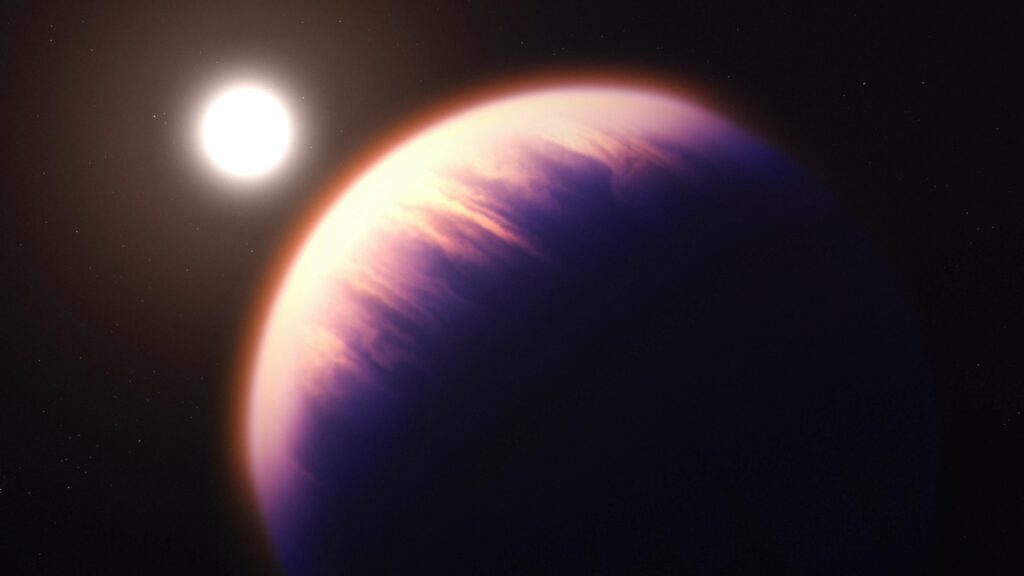Our experts examine the hottest new research
CUTTING EDGE
JWST reveals active exoplanet atmospheres
The telescope has found evidence of atmospheric reactions above an exoplanet

The James Webb Space Telescope (JWST) has been fully calibrated and operational for over six months now. The incredible images it has returned, rich with eye-popping detail, tend to make the news, but the JWST has also made a number of pivotal contributions to our understanding of the cosmos.
As part of the first round of science observation programmes, JWST has been observing transiting exoplanets. This programme was proposed and led by three principal investigators: Natalie Batalha at the NASA Ames Research Center, Jacob Bean at the University of Chicago, and Kevin Stevenson at the Space Telescope Science Institute. But the particular research paper I’m reporting on here involved some 80-odd co-authors – it represents a phenomenal collaborative effort of planetary scientists.
JWST was used to observe WASP-39b, an exoplanet orbiting a star around 700 lightyears away. It has roughly the mass of Saturn, is 30% larger than Jupiter, and orbits its Sun-like star eight times closer than Mercury is to our Sun. The team collected data across a broad range of the near-infrared spectrum while the planet was transiting in front of its star, and by analysing the absorption features were able to explore the make-up of the planet’s atmosphere.
The team detected atmospheric constituents, including sodium, potassium, carbon dioxide and water vapour, which have all previously been found. But they also detected sulphur dioxide, a first for an exoplanet atmosphere. Sulphur dioxide is released by volcanism on terrestrial worlds – such as Earth, Venus and Jupiter’s moon Io – but in gas giants like WASP-39b it must come from a different source.
“The team detected sodium, potassium, carbon dioxide and water vapour. But also sulphur dioxide, a first for an exoplanet”
In our local gas giants, sulphur deep in the atmosphere exists as hydrogen sulphide gas, but as this is churned up to higher altitudes the energetic photons of ultraviolet rays from the Sun break apart the hydrogen sulphide and drive further chemical reactions to produce sulphur dioxide. Such UV-driven reactions are known as photochemistry, and in Earth’s atmosphere, for example, produce the ozone layer by driving reactions of oxygen molecules. This data on WASP-39b is the first concrete indication of photochemistry being crucial in the atmospheric composition of exoplanets too.
The presence of sulphur dioxide at the signal level discovered by the team also has other implications. A fundamental measure of the composition of gas giant planets is their ‘metallicity’ – that is, how rich they are in elements heavier than helium. These results indicate WASP-39b must have a metallicity around 10 times that of the Sun, so similar measurements of other exoplanet atmospheres can be used as a powerful tracer for heavy elements in general.
As well as marking an important first for exoplanet research – the detection of photochemical products such as sulphur dioxide – these results demonstrate just how capable this new observatory is for characterising exoplanets compared to previous space telescopes such as Hubble and Spitzer. And this bodes well for JWST’s ability to probe the atmospheres of smaller, rocky planets, such as those in the TRAPPIST-1 system.

Prof Lewis Dartnell is an astrobiologist at the University of Westminster.
Lewis Dartnell was reading Direct Evidence of Photochemistry in an Exoplanet Atmosphere by Shang-Min Tsai et al.
Read it online at: arxiv.org/abs/2211.10490